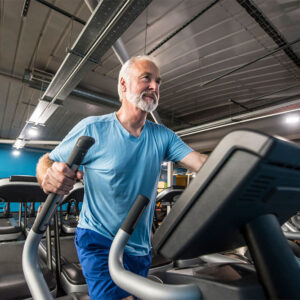
“Window” Trick BEATS Diabetes
The list of “musts” is a mile long when you’re diagnosed with type 2 diabetes.
You MUST take these meds. You MUST give up those foods. You MUST do this kind of exercise. You MUST monitor your blood sugar.
It’s downright overwhelming, not to mention disheartening.
But what if it DIDN’T have to be that hard? What if there was ONE change you could make that would cost you nothing, is easy to master, and would make a DRAMATIC improvement in your blood sugar control?
A new study confirms that this simple “window” trick could do precisely that.
I’m talking about intermittent fasting.
Now, I’m sure you know what fasting is. It’s simply going without eating food for a while.
The fact is we all fast daily when we’re asleep. But most of us break that fast soon after we’re awake.
This means we fast for about eight hours. And then we eat off and on for the next sixteen hours until we head to bed again.
Intermittent fasting is simply spending MORE of the time you’re awake, NOT eating. It’s really that simple.
Yet, despite it being such a small change, fasting for those few additional hours during the day can have DRAMATIC effects on your blood sugar.
Researchers recently confirmed this in a new study published in the journal Diabetologia.
For the small study, 14 overweight participants with type 2 diabetes were asked to confine everything they ate to ONLY 10 hours during the day.
The fasting volunteers who only ate during that 10-hour window ended up with:
- reduced fasting blood sugar
- more time spent in a healthy glycemic range
Obviously, both are MAJOR benefits for anyone battling diabetes.
And, incredibly enough, confining eating to the assigned window was the ONLY change participants were asked to change. The volunteers weren’t asked to eat less food. In fact, they could eat as much as they wanted! Just as long as it was confined to the 10 hours they were allowed to eat.
Why does intermittent fasting work?
The short answer is less insulin.
See, when you eat, your body releases insulin. This helps the sugar that’s circulating in your bloodstream to enter your body’s cells.
But the longer insulin remains elevated, the more resistant cells can become to taking in that sugar. And this leaves the sugar circulating in your bloodstream.
You can make intermittent fasting work for you by slowly cutting back on the hours you eat every day over a week or two.
And the best part is the 10-hour window is flexible. For example, I find it easy to stop eating food in the early afternoon. But waiting to eat in the morning is hard for me.
Choose what works best for YOU.
P.S. But why stop with intermittent fasting? This “mystery berry” can TAME blood sugar spikes by 40 percent! Click here for the whole story.
Source:
“Three weeks of time-restricted eating improves glucose homeostasis in adults with type 2 diabetes but does not improve insulin sensitivity: a randomised crossover trial.” Diabetologia 65, 1710–1720 (2022). doi.org/10.1007/s00125-022-05752-z
Written By Dr. Scott Olson, ND
Nearly 25 years ago, failed mainstream medical treatments left Dr. Olson in constant pain – and his health in ruins. And that’s when he did something REVOLUTIONARY. He began his career in medicine – and dedicated his life to uncovering the true, underlying causes of disease.
Through his innovative medical practices in Tennessee and Colorado, Dr. Olson has helped cure countless seniors from across America of arthritis… heart disease… diabetes… and even cancer. All without risky prescription drugs or painful surgeries.
View More Free Articles
The Secret Ingredient to a Longer, Happier Life
Let’s face it. We’re all in need of an attitude adjustment from time to time. After all, when you turn on the news these days, the world can seem pretty dark. That is unless you make it a practice to look for the silver linings. In fact, Harvard researchers say when you do, something quite...
Do You REALLY Need All Those Skincare Products?
I often get questions about skincare products—and here’s what I’ve learned. In today’s beauty-obsessed world, it’s easy to fall into the trap of spending hundreds every month believing you need countless products to fight aging and achieve healthy, glowing skin. However, many dermatologists argue that LESS is MORE when it comes to skincare. Simplifying your...
“Ebb and Flow” Technique TRANSFORMS Senior Brain Health
You know by now that exercise is good for you. It keeps your heart healthy, your muscles strong, and your waistline trim. But what if I told you that a trendy “ebb and flow” workout technique—often associated with young fitness enthusiasts—could actually be a game-changer for us “oldsters” when it comes to brain health? And...
Mailbag: Slash Your Risk of Bone Fractures as You Age
“My doctor recently told me that I have osteoporosis. What can I do to reduce my risk of fractures and maintain strong bones as I age?” – Margaret Hi Margaret, Sorry to hear about your diagnosis. I’m sure it was a shock. Osteoporosis is a serious condition that affects millions of people, and it’s not...
Household Favorite EXPOSED as Cancer Risk?
We all want to believe that the products we use daily are safe. After all, if they weren’t, they wouldn’t be on store shelves, right? Well, I hate to break it to you, but sometimes, the truth is far more alarming than we’d like to admit. The World Health Organization (WHO) has just dropped a...
Hidden Heatwave Threat REVEALED
Heat waves can have serious consequences. After all, staying cool isn’t just a comfort issue. When the mercury soars, it threatens your health—especially when you’re a senior. There are various reasons for this, including chronic medical conditions and bodies that just don’t regulate temperature as well as they once did. But there’s another heat-linked threat...
The Hidden Threat Behind Your Achy Joints
Picture this… You’re trying to enjoy a leisurely stroll in the park, but each step sends a jolt of pain through your knee. Or maybe you’re attempting to open a stubborn jar lid, only to have your fingers refuse to cooperate, leaving you feeling frustrated and helpless. Perhaps you’re simply trying to get out of...
Parkinson's Signs You Can't Afford to Miss
Imagine waking up one day to find your body betraying you. Your hands tremble as you try to button your shirt. Your feet shuffle when you want to walk with purpose. Once strong and clear, your voice now barely reaches above a whisper. This is the reality for those living with Parkinson’s. But what if...
Do Protein Needs Drop with Age? The SURPRISING Answer
I had a patient ask me the other day if they needed as much protein now as when they were younger. After all, we aren’t quite as active as seniors compared to when we were spring chickens. It’s a good question. And the answer might surprise you… Remember when you could devour a whole pizza...
Follow Your “Gut Feeling” to Reduce Diabetes Risk
It seems like every day we learn something new about the incredible influence our gut has on our overall health. From mood to immunity, and even to how well we sleep, the community of microbes in our digestive tract is pulling the strings behind the scenes. So, it should come as no surprise that researchers...









